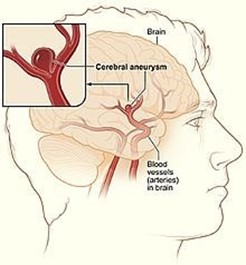A nurse is reviewing discharge instructions with the family of a client who sustained a minor head injury earlier in the day. Which of the following instructions should the nurse include?
Apply heat to the area of swelling for the first 48 hr.
Repeatedly ask the client questions to check for orientation.
Do not let the client engage in strenuous activities for 1 week.
Encourage the client to sleep for the first 24 hr.
The Correct Answer is C
The nurse should instruct the family to not let the client engage in strenuous activities for 1 week following a minor head injury. This can help prevent further injury and allow the client to rest and recover.
Applying heat to the area of swelling for the first 48 hr, repeatedly asking the client questions to check for orientation, and encouraging the client to sleep for the first 24 hr are not appropriate instructions for the nurse to include in this situation. Applying heat can increase swelling and inflammation. Repeatedly asking the client questions can be disorienting and confusing. Encouraging the client to sleep for the first 24 hr is not necessary and could interfere with monitoring the client's condition.
Nursing Test Bank
Naxlex Comprehensive Predictor Exams
Related Questions
Correct Answer is A
Explanation
a.A GCS score of 8 indicates severe impairment, suggesting the client may be in a state where they cannot perform basic self-care activities and thus require total nursing care.
b.A GCS score of 8 indicates severe impairment but not necessarily a deep coma. Scores below 8 suggest a comatose state, but deep coma is more likely to be indicated by a score of 3-4.
c.A GCS score of 8 is not consistent with a client who is alert and oriented. This score indicates significant neurological impairment.
d.A GCS score of 8 does not indicate stable neurological status. It suggests severe impairment and potentially unstable or deteriorating neurological condition.
Correct Answer is D
Explanation
A nurse collecting data from a client who is 6 days post craniotomy for removal of an intracerebral aneurysm should monitor the client for hypertension as a manifestation of increased intracranial pressure. Increased intracranial pressure can cause changes in blood pressure, including hypertension.
a. Peripheral edema is not a manifestation of increased intracranial pressure. Peripheral edema is swelling in the extremities and can be caused by a variety of conditions.
b. Diarrhea is not a manifestation of increased intracranial pressure. Diarrhea is loose or watery stools and
can be caused by a variety of conditions.
c. Decreased pedal pulses are not a manifestation of increased intracranial pressure. Decreased pedal
pulses can indicate poor circulation to the feet and can be caused by a variety of conditions.

Whether you are a student looking to ace your exams or a practicing nurse seeking to enhance your expertise , our nursing education contents will empower you with the confidence and competence to make a difference in the lives of patients and become a respected leader in the healthcare field.
Visit Naxlex, invest in your future and unlock endless possibilities with our unparalleled nursing education contents today
Report Wrong Answer on the Current Question
Do you disagree with the answer? If yes, what is your expected answer? Explain.
Kindly be descriptive with the issue you are facing.
